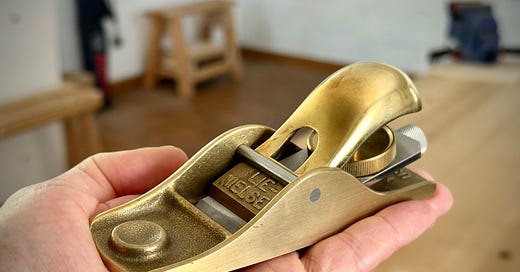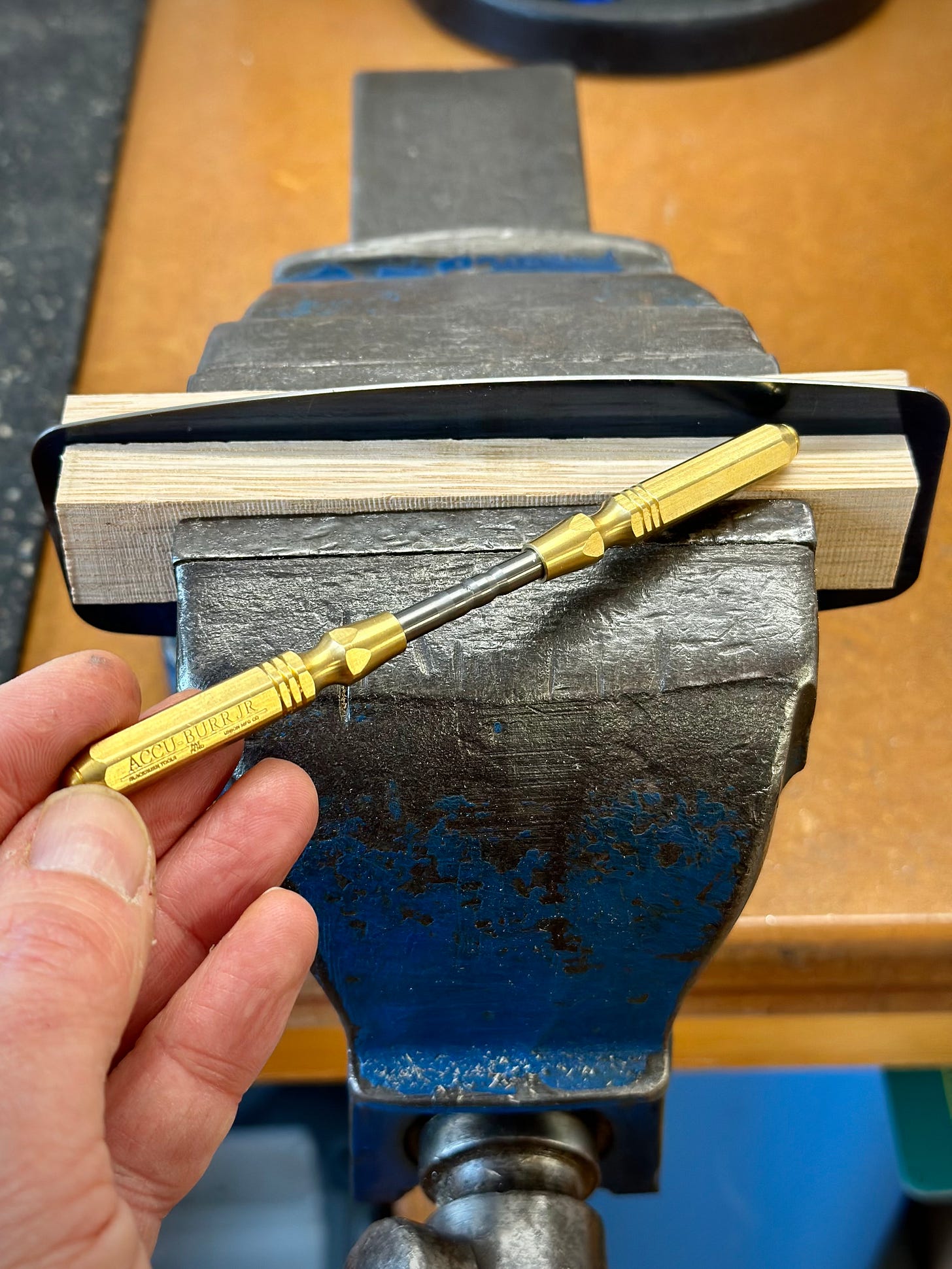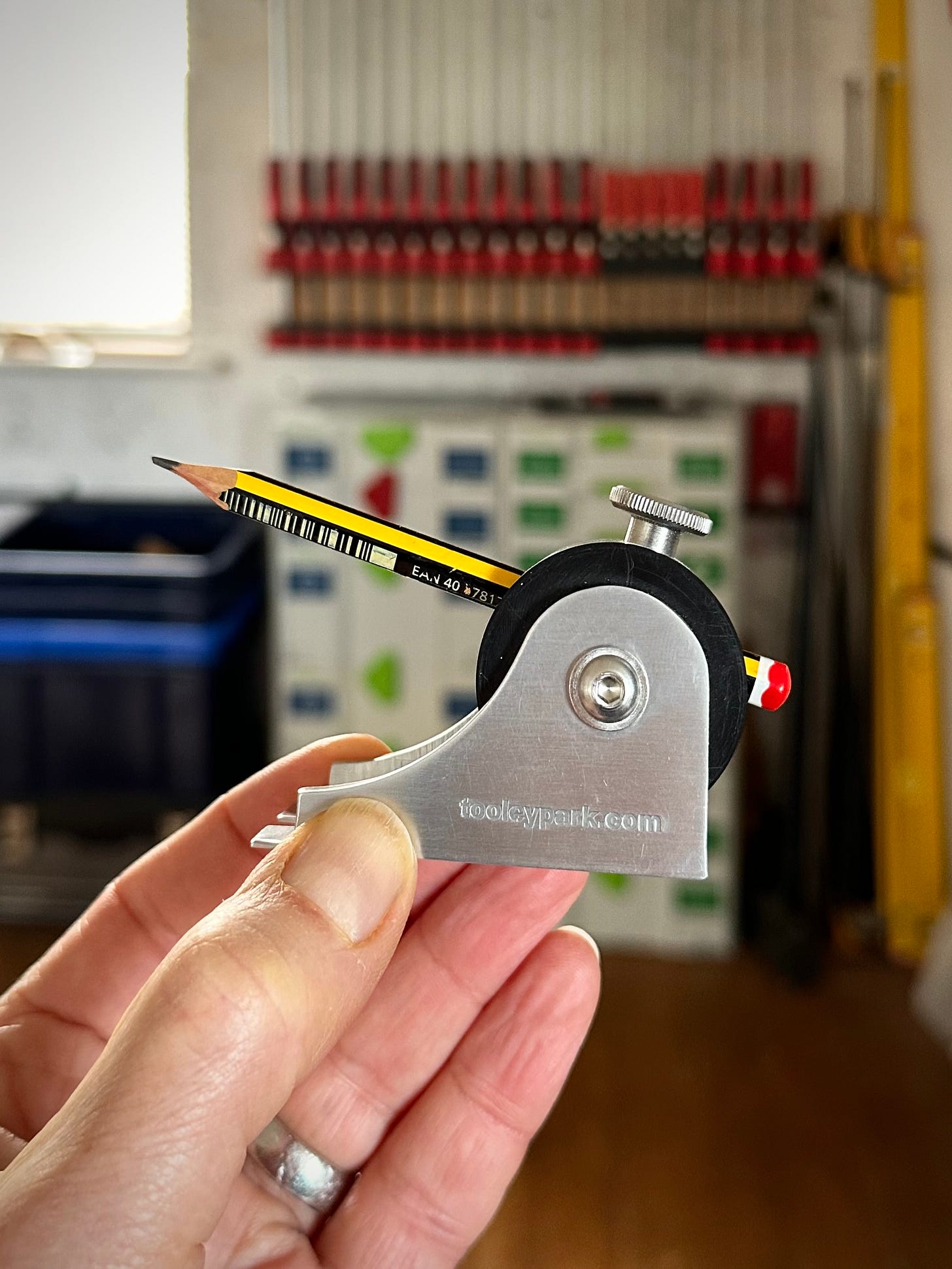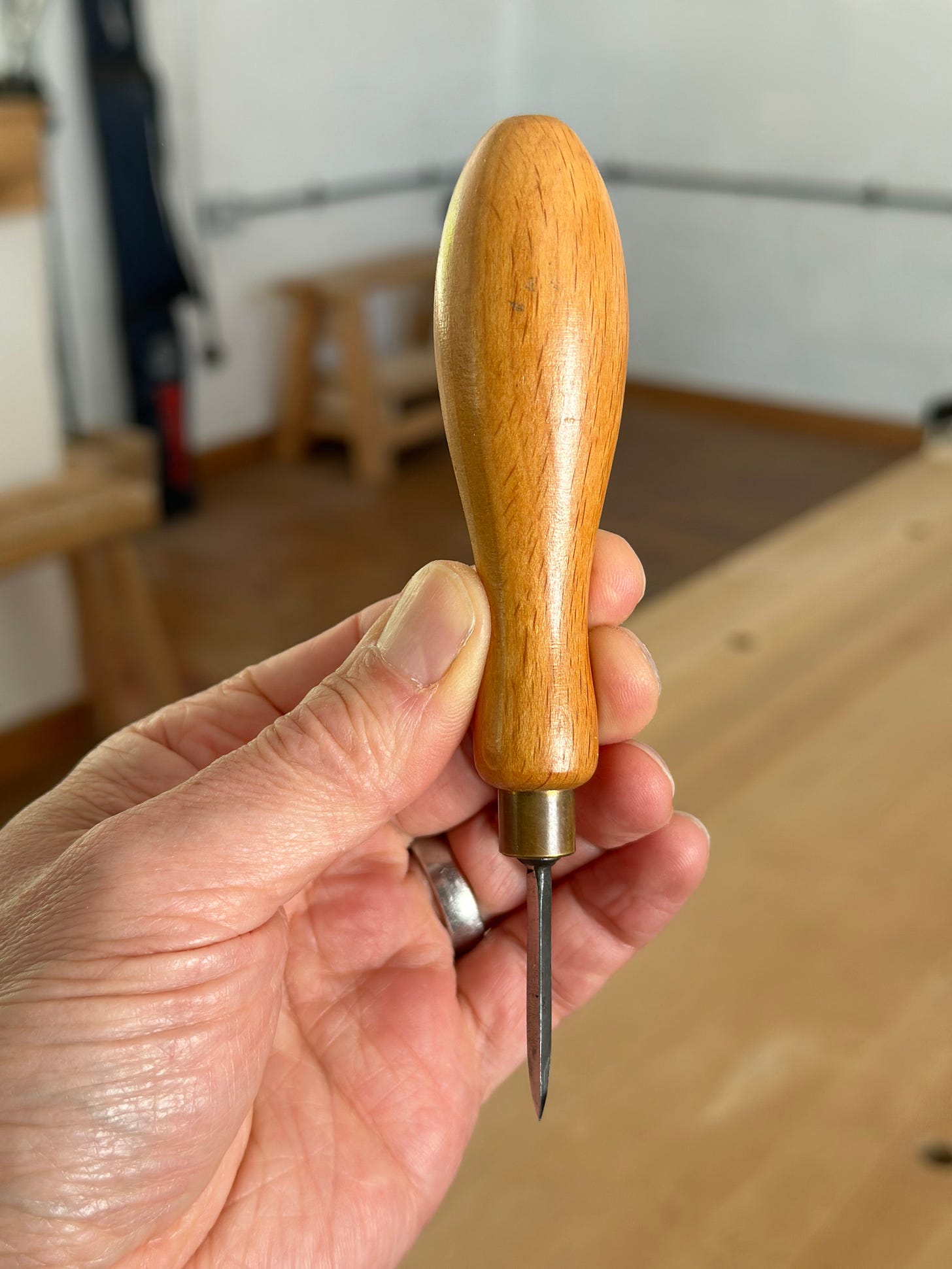This week I’m talking about tools that fit in the palm of your hand, and despite their small size make a big contribution to the work. I suppose the selection I’ve made reflects my recent chairmaking work, although none of these are really specialist chairmaking tools as such. The reason for this somewhat esoteric topic is that three days ago I had surgery to repair a hernia, and will be lifting nothing heavier than a cup of coffee for a couple of weeks. So I thought I would capitalise on that restriction and sweat the small stuff. I’ve chosen half a dozen little gems to discuss here. And I've got a couple of small things of my own that are giving me some discomfort right now I can tell you. But I don’t think we’ll discuss that.
The tools I’ve chosen all live in the top till of my tool chest and are things I pick up frequently when making a chair. Unlike last week, I have no connection to the makers of these tools and do not benefit commercially from their sales. I am not sponsored and paid full price in all cases. They are just small things I use and like, and I’ll try to tell you why. In almost all cases there are other alternatives that are just as good, so don’t read this as being recommendation of the thing you absolutely must have to be successful. As we established last week, the Chairpanzee is the tool you need if you want to access the pathway to true enlightenment.
Veritas Trammel Points and Lead Holder
The veritas trammel points are machined from stainless steel, and come with points for both heads. You can then add a lead holder for one end so it becomes a beam compass. What’s nice about it, is that the lead holder screws in directly where the point was, so the lead point is still central to the tool. They take the same lead as my favourite clutch pencils. I sharpen the lead in the pencil, then snap a length off and swap it into the trammel. They’ll clamp onto a timber batten, a metal straightedge, or here I am using a section of aluminium extrusion. If you want to know a secret, it’s the rail for suspending hanging files that I nicked out of my desk drawer at work. I have some antique trammel points that are showy brass things, but they’re too heavy really. These on the other hand are made for work, not display, and do what they do really well.
Blackburn Tools / Lakeshore Carbide / Union Mfg Co Accu-Burr Jr Burnisher
This is a relatively new one to me, but is already a firm favourite. The grooves in the carbide rod turn a burr on both sides of the scraper at the same time, so you just hold it level and don’t have to judge the angle. The three grooves give you a choice of angle, but so far I’ve just used the middle one. If what you want is to quickly turn a burr and get back to scraping, this is going to get you there most expediently. It does seem pretty expensive for what it is, but it’s nicely made. Working with a card scraper is the gateway to reduced sanding for hand tool woodworkers. You’ll still make some dust with a card scraper (depending on the wood), but less than with sanding. More importantly you’ll achieve a good finish on difficult grain where planing wouldn’t get you there, or on surface shapes that don’t suit a plane.
Tooleypark Fatboy Scriber
This is a well made, simple scribing tool. I didn’t actually use it on the recent six-stick comb-back, as I need the increased reach of a DTI stand that I also use for the same job, but I did do the Sheffield stool with it. It works nicely for scribing a chair leg to the benchtop, but would work equally well for scribing fitted furniture to an uneven wall.
Marples Birdcage Awl
Quite a few makers offer birdcage awls these days, but most of them are making an awl with round stock and grinding a square point on the end. What’s nice about the blade on this Marples one is that it remains thin and square in section all the way up. That means you can ream a deep hole, and if you want to use the cutting edge on the side of the tool to widen a hole, it’s there. As well as marking hole positions, I regularly use this to minutely shift screw positions when I’ve got the hole slightly wrong. By inserting the tip off centre, you can persuade a few fibres from the edge of the hole to move across and in doing so shift the centre point. It really works, is cheap and not in the least bit fancy. For some reason there are three awls in my tool chest, but this is the one I always reach for.
Centre Square (not maker specific, although this one is from Groz)
Typically you would expect a centre square to be used for finding the centre of round stock, but for the chairmaker they’re really useful on square and octagonal stock as well. Any brand would do the job. Often stock is not perfectly square when prepared by hand, so it’s important to mark the diagonal from both sides, with the true centre lying in between the lines. This one is actually a metal working tool, but I think all woodworkers should have one. It gets picked up all the time in chairmaking, including marking the kerf positions on tenons to be split with a saw.
Lie-Nielsen 102 Low Angle Block Plane.
Now I realise it’s not exactly a revelation that a Lie-Nielsen plane is good. Of course it is. But this one is particularly good because of it’s size and simplicity. It fits so perfectly in the hand that I find it to be an extension of the arm for so many chairmaking tasks. It doesn’t have an adjustable mouth, but I rarely find that an issue - a sharp blade is more important in my view. I’ll go back over any tear out with the 60 1/2. An experienced joiner once told me he had been taught to choke the shavings exiting a smoothing plane mouth with his thumb to help reduce tear out. Does it work? I can’t really say, but I do allow the shavings to build up behind my finger on this plane as a consequence of how it is held. Maybe it helps, maybe it doesn’t.
Those are your six small things which I think make a big contribution to many woodworking tasks. I wouldn’t want to be without any of them in my tool chest. I’ll be here sitting awkwardly and wincing occasionally for the next week or so, then we’ll get back to normal business. By then I should be able to lift the tills from the chest and get to the bigger tools beneath.










Stick with the small! After my stomach surgery the surgeon immediately said no heavy lifting and especially no lifting and positioning long lengths of timber. He also said your body will tell you if you go a bit overboard- I felt like crap, progressively less so with over my two year recovery time . Like the selection. I do a variety of maintenance work and required a small tool for patching render. At the local hardware an old timer was behind the counter and upon me asking replied conspiratorially 'I have a small tool you know' Fortunately the one I actually was after was in stock, couldn't have done much with the other.
Get better soon, and take care